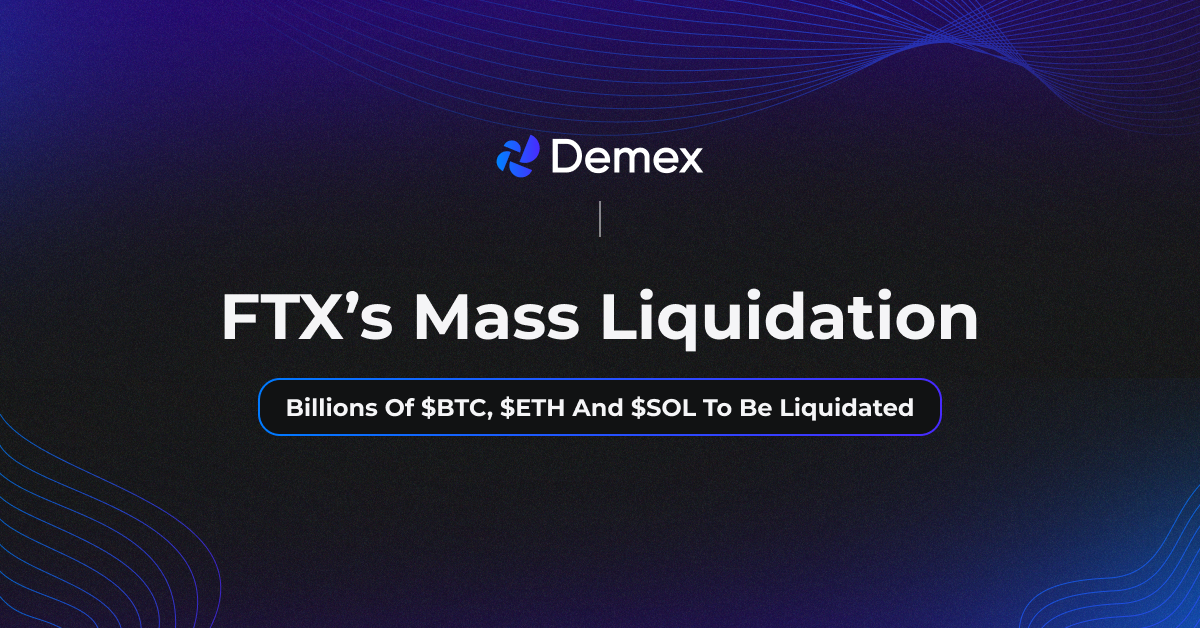FTX’s Mass Liquidation
FTX, a once $32 billion crypto exchange, recently gained court approval for a massive $3.4 billion liquidation of assets, including Bitcoin (BTC), Ethereum (ETH), and Solana (SOL). Meanwhile, founder Sam Bankman-Fried will face the court and public scrutiny for the collapse.

Almost a year has passed since the collapse of the Bahamas-based centralized exchange FTX, yet it remains in the spotlight due to ongoing proceedings, frequently making headlines. What's the latest, you ask? FTX recently gained court approval for a massive liquidation totaling a staggering $3.4 billion. Despite declaring bankruptcy, the firm still holds billions in assets, including tokens, cash, and real estate.
Timeline of Events
- September 11: FTX disclosed its top holdings, with SOL leading at $1.16 billion, followed by BTC at $560 million and ETH at $192 million The company's funds also encompass brokerage assets, cash, and government-recovered assets.
- September 13: Approval was granted for the liquidation of assets, including Bitcoin (BTC), Ethereum (ETH), Solana (SOL), and other tokens amounting to $3.4 billion.
- October 3: The trial for fraudulency and conspiracy charges against Sam Bankman-Fried is set to commence. Having previously pleaded not guilty, Sam is currently preparing his defense.
The Aftermath
You might be wondering what the ripple effect of the liquidation may cause. To mitigate risk, the court has established a structured liquidation schedule. Initially, assets worth up to $5 million will be liquidated, gradually increasing to $10 million.
FTX has partnered with Galaxy Digital, an institutional fund management firm, to oversee the liquidation process, ensuring a safe and equitable sale of assets over a sustained period. This collaboration aims to minimize price volatility and facilitate compensation for affected customers in US dollars.
As for Sam Bankman-Fried's whereabouts, the former FTX Chief is currently in prison in New York, awaiting his trial on October 3, 2023. He has been denied pretrial release but granted access to a laptop and internet to prepare for the upcoming trial.

The Market Sentiment
Following the liquidation of assets, traders and analysts are speculating volatility in the price movement of the assets involved namely - BTC, ETH, and SOL. The price movements provide traders with the opportunity to make a trade of a lifetime by participating on the perpetuals markets.
You can go long or short on BTC, ETH or SOL on Demex right here, as we support the three main perpetuals markets. Simply, deposit USD and you’re ready to put your trading skills to the test!
Diving in Deeper
It's evident that Sam Bankman-Fried is facing significant contention, seemingly avoiding responsibility for his role in the collapse that caused substantial losses for many. A couple of writings have been released publicly showing his current state of mind as he writes, “I’m broke and wearing an ankle monitor and one of the most hated people in the world.” He continues to shift blame onto his former colleague and girlfriend, Caroline, for the collapse.
The fallout from the collapse continued to unravel, triggering a domino effect that reached even Sam Bankman-Fried's parents. Bankman and Barbara Fried, Sam's parents, found themselves embroiled in a lawsuit initiated by the FTX Bankruptcy Estate. The objective was to recover millions of dollars believed to have been grossly misappropriated.
Notably well-versed in law, Bankman and Fried were esteemed professors at Stanford Law School. However, allegations surfaced suggesting their involvement in orchestrating the misappropriation of funds to enhance their own lifestyles, implying that their hands were just as tainted as their son's in this dire situation.
A Recap: The FTX Collapse
FTX, once a $32 billion centralized crypto exchange, faced a dramatic collapse, akin to the "Lehman Brothers Moment" in the crypto world. Sam Bankman-Fried (SBF), the 30-year-old founder of FTX and Alameda Research, was a central figure in this saga. SBF amassed immense wealth and popularity, making FTX a prominent crypto exchange.
FTX's rise was propelled by high-profile acquisitions, celebrity endorsements, and promises of high returns, attracting investors seeking higher yields than traditional banks. SBF's celebrity status grew as FTX gained traction. However, underlying risks started to surface.
The downfall began when concerns arose about FTX using its native token, FTT, as collateral—a volatile asset. On November 6 2022, Binance's announcement of selling FTT triggered a mass withdrawal from FTX, amounting to an estimated $6 billion. FTX faced a liquidity crunch, unable to fulfill withdrawals.
In an attempt to alleviate the situation, Binance sought to acquire FTX but abandoned the deal due to alleged mishandling of customer funds and ongoing investigations. This triggered further panic and eventually led FTX to file for bankruptcy on November 11, 2022. Subsequent investigations revealed suspicions of FTX lending customer money to Alameda Research, owned by SBF.
The TLDR
FTX, a once $32 billion crypto exchange, recently gained court approval for a massive $3.4 billion liquidation of assets, including Bitcoin (BTC), Ethereum (ETH), and Solana (SOL). This comes almost a year after its collapse. The liquidation is structured to prevent market crashes, gradually increasing from $5 million to $10 million. Meanwhile, founder Sam Bankman-Fried will face the court and public scrutiny for the collapse.

